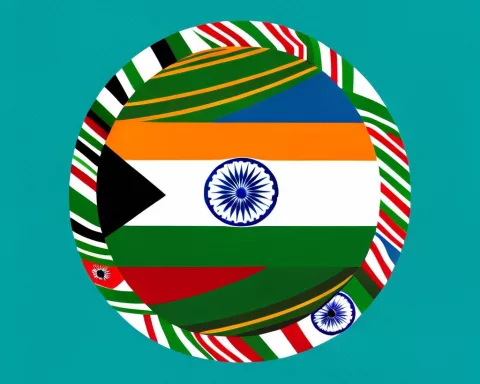India’s hair trade, renowned for providing high-quality human hair, is facing a crisis caused by a secretive hair smuggling ring. The illegal operation transports hair to China, the largest consumer base for Indian hair exporters, via Myanmar and Bangladesh, potentially causing job losses of up to 411,000. The Indian government introduced new regulations in January 2022, but stricter enforcement may be required to combat this illicit trade worth $1.5 billion.
What is causing the crisis in India’s hair trade sector?
India’s hair trade, known for supplying high-quality human hair, is facing a crisis due to the existence of a clandestine hair smuggling ring. This illegal operation transports hair to Myanmar and Bangladesh before reaching China, the biggest consumer base for Indian hair exporters. The unauthorized trade is estimated to be worth $1.5 billion and has caused significant harm to legitimate Indian businesses, potentially leading to job losses of up to 411,000. New regulations have been introduced, but more stringent enforcement may be necessary.
The Crippling Blow to India’s Hair Trade
India’s covert hair trade, long regarded as the globe’s top-tier supplier of superior human hair, is experiencing a moment of crisis that’s shaking up the country’s hair trade sector. The instigator of this turmoil is a surreptitious operation that traffics human hair, a situation that has not only led to a substantial amount of job losses but is also threatening India’s supremacy in this flourishing industry.
The Enforcement Directorate of India brought to light the existence of this hair smuggling ring earlier this month. The illegal operation is believed to transport the product from India to nations like Myanmar and Bangladesh, before it finally reaches China. The evolving situation is especially concerning given China’s escalating demand for hair products like wigs, extensions, and hairpieces. This makes the country the biggest consumer base for Indian hair exporters. Local reports estimate the value of this unauthorized trade to be an astounding $1.5 billion.
The Worrying Trend of Swindling in the Hair Trade
In the past, Chinese companies would purchase the product from Indian sellers for a price range of $150 to $200 per kilogram. However, Sunil Eamani, who belongs to the Human Hair and Hair Products Manufacturers and Exporters Association of India, has observed a concerning trend. He details how more and more Chinese buyers are now recruiting local agents who acquire the hair directly from Indian sellers at just a fraction of the original price. This shift in procurement methods has dramatically changed the dynamics of the trade, encouraging smuggling as unethical individuals seek to procure supplies at rock-bottom prices and evade taxes.
In India, hair is typically collected from residences and temples, where it is regularly cut for religious reasons. Eamani elaborates that this hair is becoming more commonly directed towards smugglers. These smugglers then distribute the hair in markets across China, the U.S., Europe, and the Middle East. The fallout of this underhanded trade has been severe, inflicting considerable harm on legitimate Indian businesses and leading to potential job losses that could reach up to 411,000 across the entire sector.
The High Demand for Indian Hair & The Government’s Response
Swarnali Ghosh, co-founder of AWE Hair International (a leading wig manufacturer in India), explains the global appeal for Indian hair. Ghosh states, “India has a deep-rooted tradition of hair donation and a robust industry. This puts it in the position of being the world’s leading supplier of human hair.”
The Indian government, responding to the crisis, introduced a fresh series of regulations in January 2022. These rules require stakeholders to secure permissions or licenses. Despite these measures, as indicated by Eamani, the recent investigation into smuggling indicates that more stringent enforcement may be necessary.
The complicated, clandestine universe of human hair smuggling is a stark illustration of the extent to which unscrupulous individuals are willing to manipulate even the most hallowed traditions for their personal profit. Even though new regulations are currently in effect, enforcing these guidelines is critical to safeguard the integrity of India’s hair industry, the livelihoods of thousands of its workers, and the sacred practice of hair donation. As the world looks on, it’s vital that India handles this delicate predicament with resolute determination and prompt action.
What is the value of the unauthorized hair trade in India?
The unauthorized hair trade in India is estimated to be worth $1.5 billion.
What is the potential impact of the hair smuggling ring on Indian businesses?
The existence of the hair smuggling ring has caused significant harm to legitimate Indian businesses, potentially leading to job losses of up to 411,000.
What is the demand for Indian hair products globally?
Indian hair products are highly sought after globally due to India’s deep-rooted tradition of hair donation and a robust industry.
What regulations has the Indian government introduced to address the crisis in the hair trade?
The Indian government has introduced new regulations in January 2022, which require stakeholders to secure permissions or licenses.
Is more stringent enforcement necessary to combat the illicit hair trade in India?
Yes, according to industry experts, more stringent enforcement may be necessary to combat the illicit hair trade in India and safeguard the integrity of the hair industry and the livelihoods of thousands of workers.
What is the impact of the hair smuggling ring on the hair trade sector in India?
The hair smuggling ring has caused a moment of crisis in India’s hair trade sector, which is shaking up the country’s supremacy in this flourishing industry. The fallout of this underhanded trade has been severe, inflicting considerable harm on legitimate Indian businesses and leading to potential job losses that could reach up to 411,000 across the entire sector.












